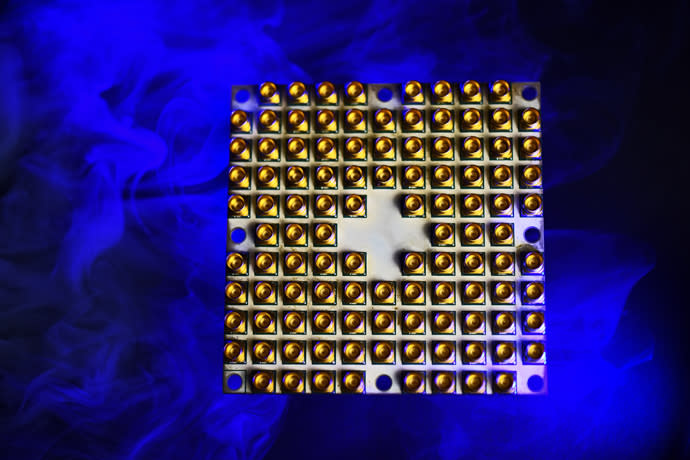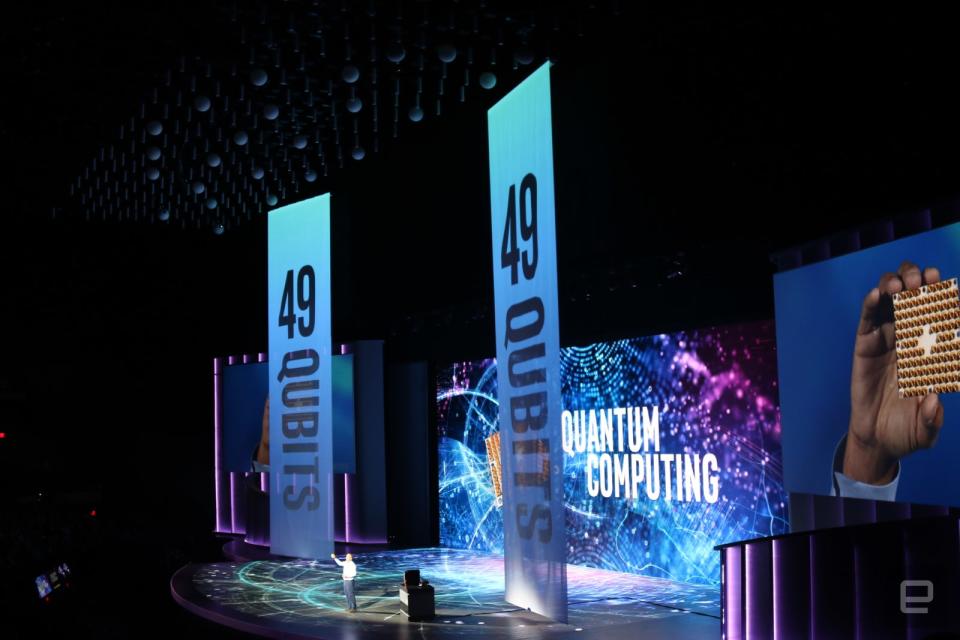Intel’s quantum computing efforts take a major step forward
Intel now has 0.0049 percent of a viable quantum computer.
It's been almost three months since Intel announced a 17-qubit superconducting chip, meant to pave the way for a future powered by quantum computers. Today at CES, Intel CEO Brian Krzanich showed off its latest superconducting test chip, the 49-qubit Tangle Lake.
Off the bat, let's be clear: Quantum computing is still quite theoretical, and it's estimated that we'll need more than a million qubits to have something viable. Dr. Michael Mayberry, corporate vice president and managing director of Intel Labs, predicts it will be "five to seven years" before the industry even begins to tackle the problems of engineering such vastly complex chips.

In addition to working on superconducting qubits, Intel is also investing in "spin qubits," a relatively new development that requires (bear with us) quantum control of the electron and the nuclear spin of a single atom in silicon. The benefit of spin-qubit chips is that they should be much smaller than superconducting chips. Intel is obviously an expert in silicon, and it's already developed a way to fabricate spin qubits on its 300nm process -- a far larger, less-refined tech than we see in modern chips.
All of these efforts then, are baby steps along the way to true quantum computing. Intel isn't the only one pursuing this goal -- IBM happens to have a giant 50-qubit quantum computer hanging around at CES -- and the competition among tech giants to own this next generation of computing can only make it come more quickly.
Click here to catch up on the latest news from CES 2018.




